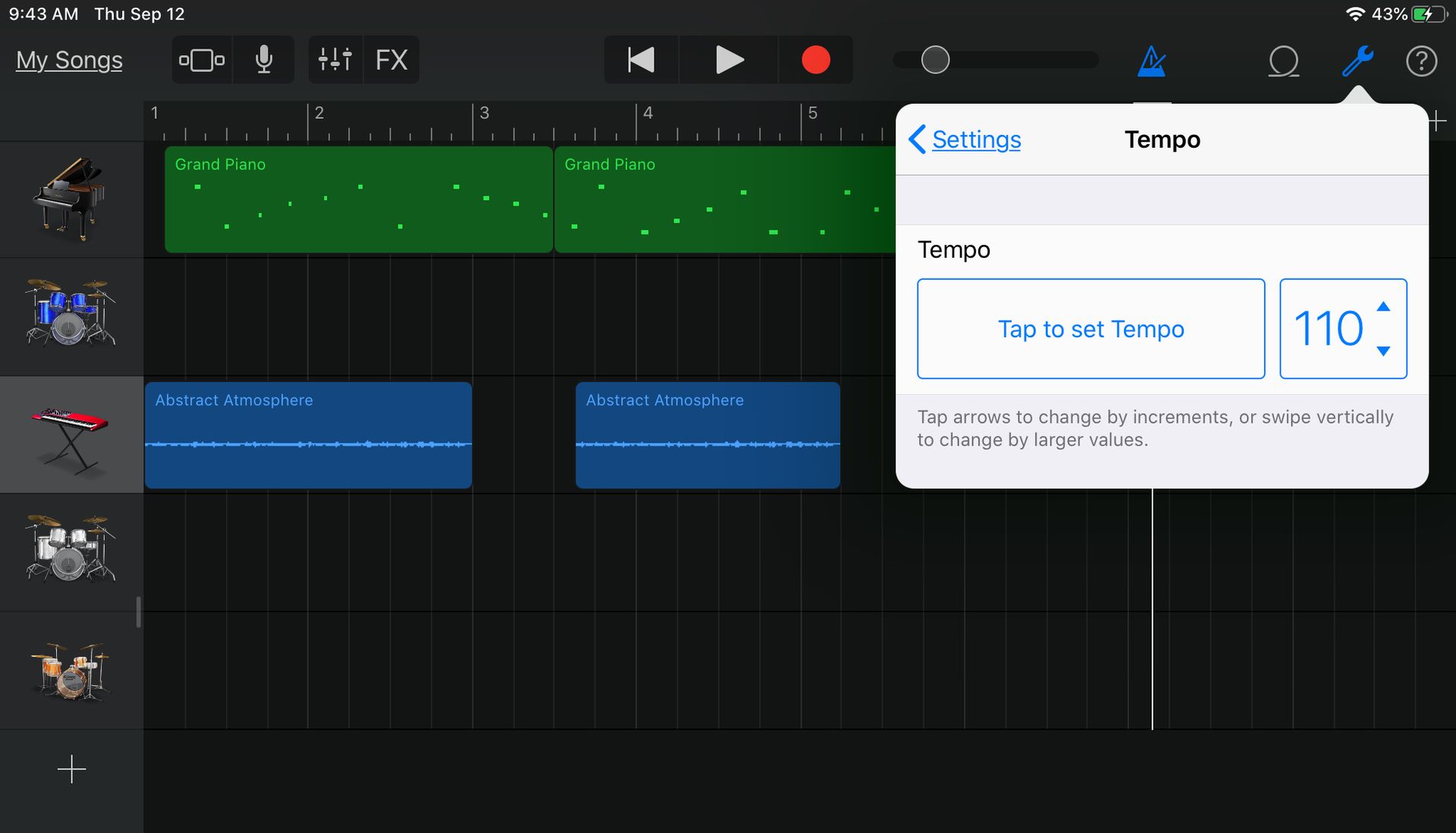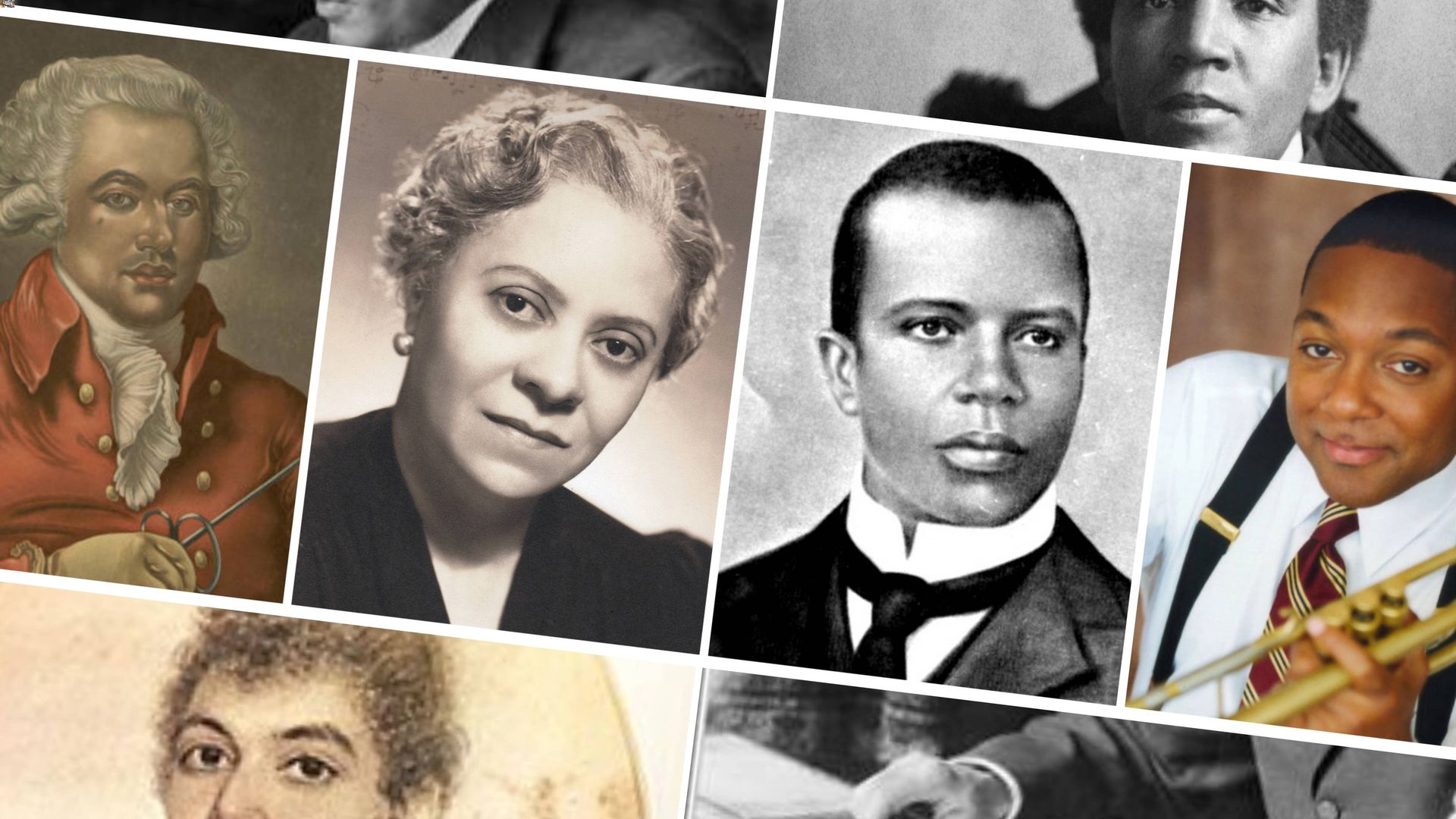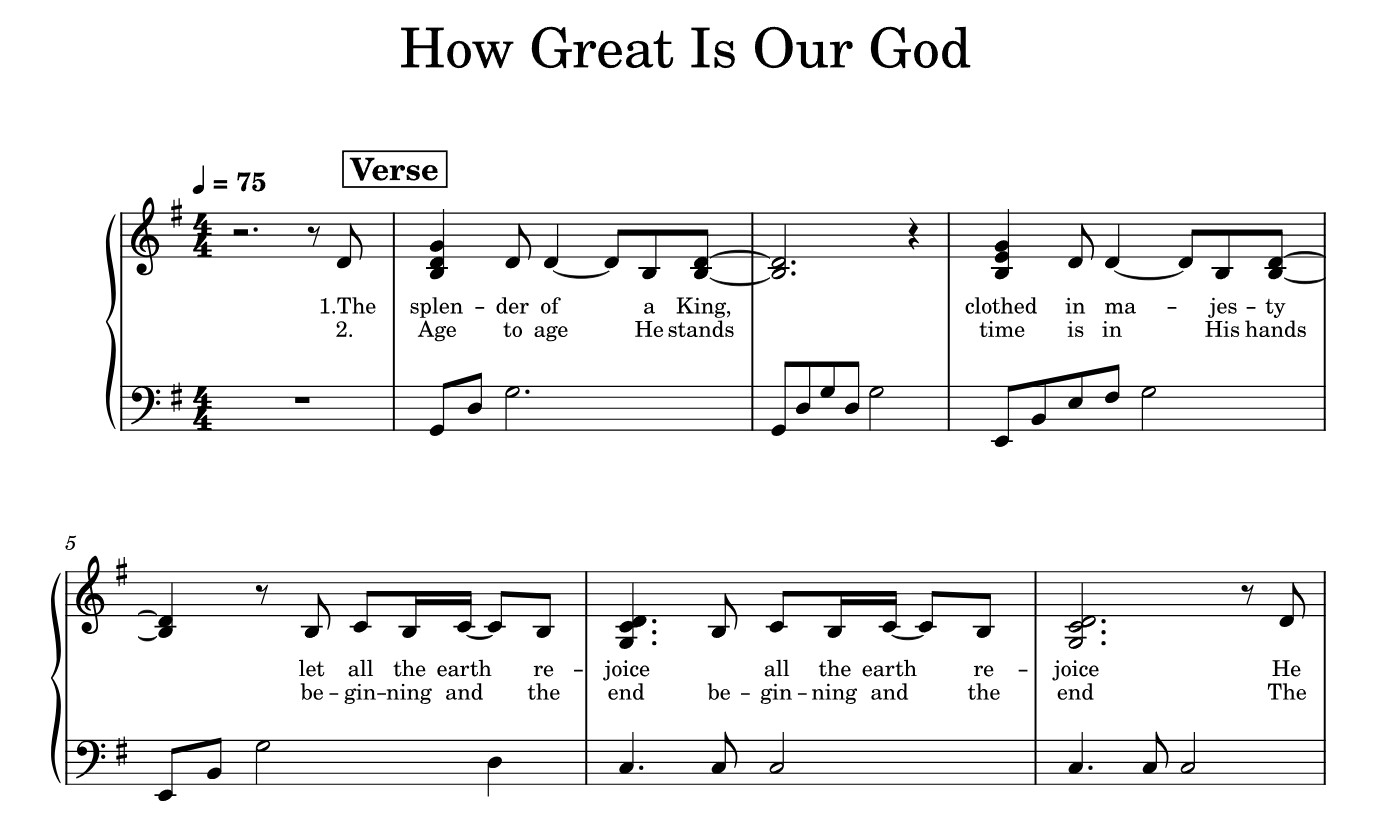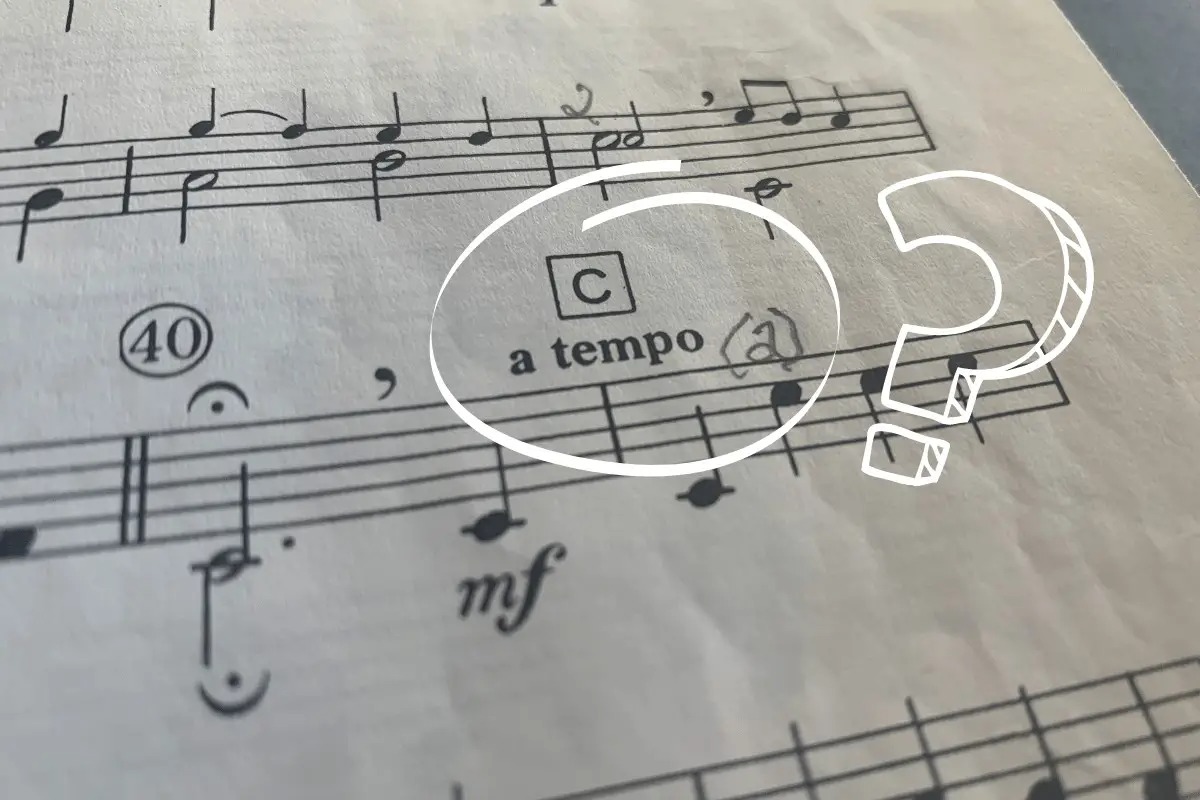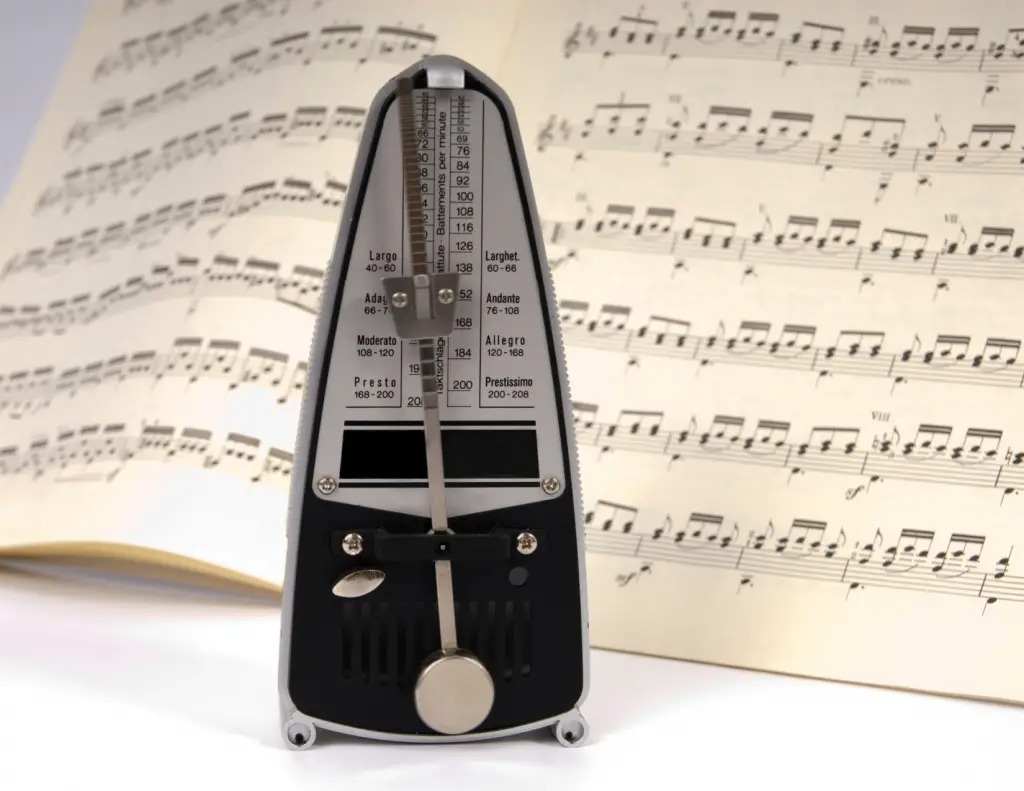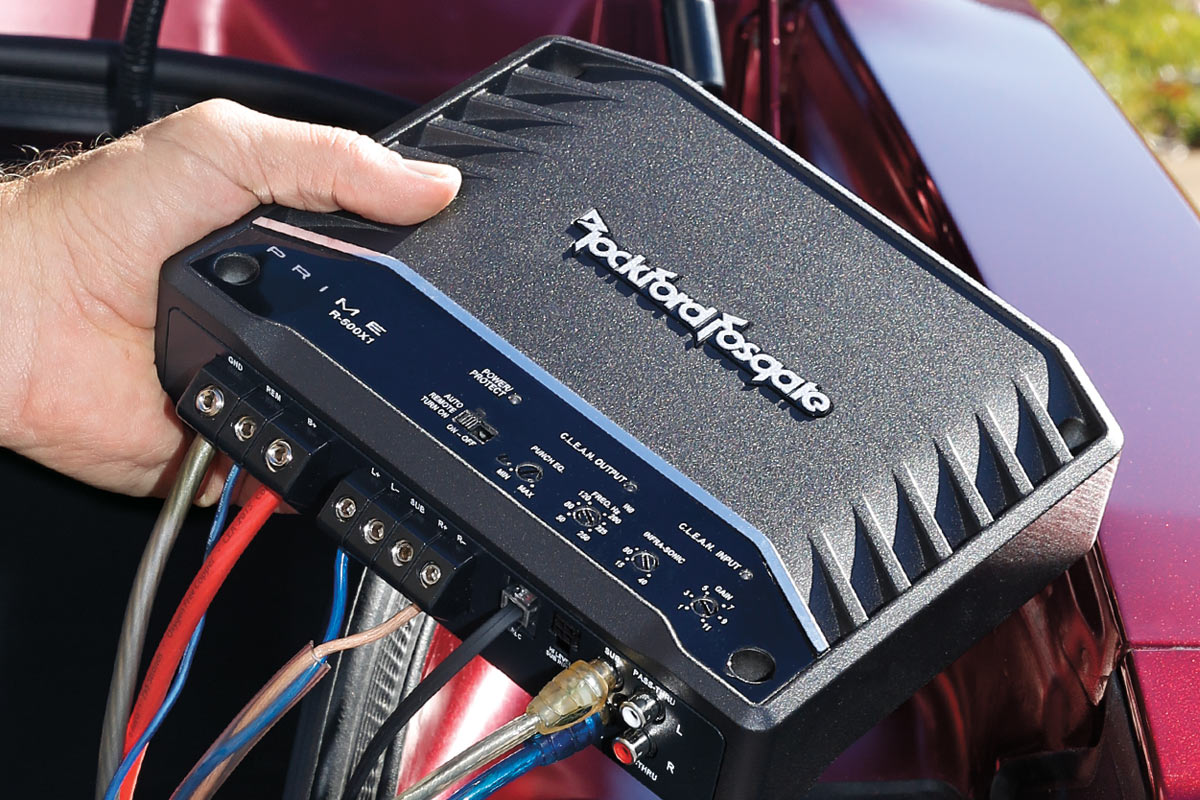Home>Production & Technology>Tempo>How Do Tempo And Dynamics Affect Our Response To Music


Tempo
How Do Tempo And Dynamics Affect Our Response To Music
Published: December 10, 2023
Discover the impact of tempo and dynamics on our emotional response to music. Explore how changes in tempo can evoke different moods and intensify our musical experience.
(Many of the links in this article redirect to a specific reviewed product. Your purchase of these products through affiliate links helps to generate commission for AudioLover.com, at no extra cost. Learn more)
Table of Contents
- Introduction:
- Understanding Tempo in Music:
- The Influence of Tempo on our Response:
- Exploring Dynamics in Music:
- The Impact of Dynamics on our Response:
- The Combination of Tempo and Dynamics:
- How Tempo and Dynamics Affect Different Musical Genres:
- The Psychology Behind our Response to Tempo and Dynamics:
- Cultural and Individual Variations in Response to Tempo and Dynamics:
- Conclusion:
Introduction:
Music has an incredible power to captivate, move, and inspire us. It has the ability to evoke emotions, stimulate our senses, and even alter our mood. One of the key elements that contribute to the emotional impact of music is tempo. Tempo refers to the speed at which a piece of music is played, and it can profoundly influence our response and perception of a musical composition.
In addition to tempo, another element that significantly shapes our experience of music is dynamics. Dynamics refer to the variation in volume and intensity within a piece of music, ranging from soft and quiet to loud and powerful. The combination of tempo and dynamics creates a rich and nuanced musical landscape, eliciting different emotional and physiological responses from the listener.
Understanding how tempo and dynamics affect our response to music can provide valuable insights into the art of composition, performance, and even the psychology of human emotions. Whether you’re a musician, a music enthusiast, or simply curious about the power of music, exploring the interplay between tempo and dynamics offers a fascinating journey into the intricate world of sound and emotion.
In this article, we will delve into the impact of tempo and dynamics on our response to music. We will uncover how different tempos and dynamics can evoke distinct emotions and physiological reactions. Furthermore, we will examine how the combination of tempo and dynamics contributes to the unique characteristics of various musical genres. Finally, we will explore the psychological and cultural factors that shape our individual and collective responses to tempo and dynamics in music.
So, prepare yourself for a melodious adventure as we embark on a journey to unravel the mysteries of tempo and dynamics in music and discover their profound influence on our emotions and perceptions.
Understanding Tempo in Music:
Tempo is a fundamental element of music that refers to the speed or pace at which a musical composition is performed. It is indicated by a specific term or a numerical value known as beats per minute (BPM). Tempo sets the overall rhythm and energy of a piece, dictating the pace at which the music unfolds.
Tempo can vary widely, ranging from slow and contemplative to fast and energetic. Each tempo carries its own unique emotional quality and can evoke different responses from the listener. For example, a slow tempo often elicits a sense of calmness, introspection, or melancholy, while a fast tempo can instill excitement, joy, or even anxiety in the listener.
Composers and musicians use different musical techniques to express tempo in their compositions. Some common tempo indicators include adagio (slow), andante (walking pace), allegro (fast), and presto (very fast). These terms provide a general guideline for the performer but can also vary in interpretation, allowing for artistic expression and creativity.
Tempo not only affects the mood of the music but also influences the physical response of the listener. When we listen to music with a faster tempo, our heart rate tends to increase, our breathing may become more rapid, and we may even feel a surge of energy or adrenaline. Conversely, slower tempos can have a calming effect on our physiological state, inducing relaxation and a sense of tranquility.
Additionally, tempo plays a crucial role in determining the danceability of a piece of music. Different tempos align with specific dance styles, such as the lively and energetic tempo of a salsa or the graceful and flowing tempo of a waltz. The tempo of music can inspire movement and invite the listener to sway, tap their feet, or engage in full-fledged dancing.
Overall, tempo is a powerful tool that composers and musicians wield to shape the emotional impact, physical response, and overall character of a musical composition. By understanding the nuances of tempo, we can appreciate the intentional choices made by artists and gain a deeper connection with the music we encounter.
The Influence of Tempo on our Response:
Tempo has a profound impact on our emotional and physiological response to music. The speed at which the music unfolds can evoke a range of emotions and elicit specific reactions from the listener.
Fast tempo music, characterized by a rapid beat and energetic rhythm, has the power to energize and uplift us. It can create a sense of excitement, enthusiasm, and even euphoria. Think of upbeat pop songs or lively dance tracks that make you want to move and groove. The fast tempo stimulates our nervous system, increases our heart rate, and fills us with a surge of energy.
On the other hand, slow tempo music carries a different emotional weight. It tends to induce feelings of introspection, relaxation, and even sadness. Slow tempo compositions, such as gentle ballads or melancholic melodies, have the ability to touch us deeply, evoking a sense of longing or contemplation. The slower pace allows us to savor each note and immerse ourselves in the emotional journey of the music.
Moreover, tempo can influence our perception of time and our ability to focus. Fast tempos can create a sense of urgency and increase our sense of time passing quickly. This can be advantageous in certain contexts, such as workouts or activities that require a burst of productivity. Conversely, slow tempos can create a sense of time standing still or slow down our perception of time, making them ideal for relaxation, meditation, or deep concentration.
It’s worth noting that individual differences can also influence our response to tempo. Some people may be more inclined to enjoy faster-paced music, while others may be drawn to slower tempos. Additionally, cultural factors can shape our preferences and emotional responses to tempo. For example, different cultures may associate specific tempos with certain activities, rituals, or emotions.
In summary, tempo holds significant power over our emotional and physiological response to music. By manipulating the speed at which the music unfolds, composers and musicians can create a wide range of experiences, from energizing and uplifting to introspective and contemplative. Understanding how tempo influences our response allows us to appreciate the deliberate choices made by artists and provides insight into the profound effects that music can have on our well-being.
Exploring Dynamics in Music:
Dynamics play a key role in shaping the expressive qualities of music. It refers to the variation in volume and intensity within a musical composition, creating contrast and adding depth to the overall sound.
One of the fundamental dynamics in music is volume. The volume can range from soft and delicate (pianissimo) to loud and powerful (fortissimo), with various gradations in between. The dynamic variations allow musicians to communicate different emotions, highlight certain musical elements, and create a sense of tension and release.
Soft dynamics, such as piano (soft) and pianissimo (very soft), can evoke a sense of intimacy, tranquility, or vulnerability. This softness allows for delicate nuances and subtle details in the music to be heard, drawing the listener in and encouraging a more attentive and introspective experience.
On the other hand, loud dynamics, such as forte (loud) and fortissimo (very loud), convey strength, power, and intensity. They can make a musical statement, demand attention, and create a sense of grandeur. The booming sound can evoke emotions such as excitement, triumph, or even fear, depending on the context in which it is used.
In addition to volume, dynamics also encompass other expressive elements, such as the intensity of the sound. This refers to how the musical phrases are played, ranging from gentle and subdued to passionate and aggressive. The interplay between soft and loud dynamics, as well as the gradual changes in intensity, can create a dynamic arc within a composition, guiding the listener through a musical journey.
By utilizing dynamics, composers and musicians can shape the narrative of a piece and enhance its emotional impact. They can build tension and release through sudden dynamic contrasts or create a sense of continuity by carefully crafting gradual changes in volume and intensity.
It is important to note that dynamics are not merely about playing louder or softer; they require a sense of control and subtlety. Skillful manipulation of dynamics allows the musician to bring out the inherent beauty of the music, showcasing its emotional depth and complexity.
Overall, dynamics contribute to the richness of the musical experience, adding texture, emotion, and complexity to the composition. Understanding and appreciating the role of dynamics in music can help us engage more deeply with the nuances of the performance and open our ears to the expressive possibilities that exist within the realm of sound.
The Impact of Dynamics on our Response:
The dynamics in music have a profound impact on our emotional and physiological response. They can elicit a wide range of reactions and greatly influence how we perceive and connect with a musical composition.
One of the primary ways dynamics affect our response is through the creation of contrast. Dynamic variations, such as changes in volume and intensity, can evoke strong emotions and create moments of tension and release within the music. For example, a sudden transition from soft to loud dynamics can startle the listener and elicit a heightened sense of excitement or surprise. Conversely, a gradual decrease in volume can create a sense of calmness or introspection.
Dynamics also play a significant role in conveying the emotional content of a musical piece. Soft dynamics can evoke a sense of vulnerability, intimacy, or tenderness, allowing the listener to connect with the more delicate and subtle aspects of the music. On the other hand, loud dynamics can create a sense of power, strength, and intensity, invoking feelings of excitement, exhilaration, or even awe.
In addition to their emotional impact, dynamics can also influence our physiological response to music. When experiencing music with loud dynamics, our heart rate may increase, our breathing might become more rapid, and our adrenaline levels may rise. This physiological reaction intensifies our emotional engagement and contributes to the visceral experience of the music.
Furthermore, dynamics have the ability to direct our attention within a musical composition. A sudden change in volume or intensity can draw our focus to a particular instrument or musical motif, highlighting its significance and guiding our interpretation of the piece. By manipulating dynamics, musicians can emphasize certain musical elements and create moments of anticipation or resolution.
It is important to note that the impact of dynamics can vary depending on the genre of music and the context in which it is presented. For example, in a classical symphony, dramatic dynamic shifts can enhance the overall narrative and provide a sense of dramatic tension and resolution. In contrast, in a jazz improvisation, subtle dynamic variations can create a sense of unpredictability and spontaneity.
By understanding the impact of dynamics on our response to music, we can develop a greater appreciation for the artistry and intention behind the musical composition. Whether we are listening to a symphony, a rock ballad, or a jazz ensemble, the dynamic choices made by the performers and composers shape our emotional journey and deepen our connection with the music.
The Combination of Tempo and Dynamics:
When considering the impact of music on our emotions, it is essential to recognize the powerful interaction between tempo and dynamics. The combination of these two elements creates a dynamic landscape that can evoke a wide range of emotional responses and intensify our connection to the music.
Tempo and dynamics can work in harmony to convey a specific mood or atmosphere. For example, a fast tempo accompanied by loud dynamics can create a sense of excitement, intensity, and exhilaration. Imagine a lively rock song with pounding drums and electric guitars that propel the music forward with an energetic pace. This combination creates a powerful and invigorating experience for the listener.
In contrast, a slow tempo accompanied by soft dynamics can evoke a different emotional response. This combination often leads to a more introspective and contemplative experience. The gentle and delicate interplay of instruments or vocals, set against a slower tempo, can create a sense of intimacy and vulnerability. This combination is commonly found in ballads or emotional performances that tug at the heartstrings of the listener.
The interaction between tempo and dynamics allows for endless possibilities in music. Composers and musicians can intentionally manipulate these elements to heighten the emotional impact of their compositions. They can create tension and release, build anticipation, or evoke a sense of calmness and serenity.
Moreover, the combination of tempo and dynamics can bring depth and complexity to a musical piece. Subtle changes in dynamics within a fast tempo can add layers of texture and nuance to the music. On the other hand, sudden dynamic shifts within a slow tempo can create dramatic moments of impact and surprise.
It is important to recognize that the combination of tempo and dynamics can greatly vary depending on the genre and style of music. For instance, in classical music, composers often explore intricate relationships between tempo and dynamics to create intricate musical structures and emotional journeys. In contrast, popular music genres such as pop, hip-hop, or electronic music may place a greater emphasis on repetitive rhythms and dynamic contrasts to create catchy and engaging compositions.
By paying attention to the combination of tempo and dynamics, we can deepen our understanding and appreciation of the nuances within a musical piece. Moreover, as listeners, we can engage more fully with the emotional and expressive intentions of the composer and performers, allowing us to experience the music in a more profound and meaningful way.
How Tempo and Dynamics Affect Different Musical Genres:
Tempo and dynamics play a crucial role in shaping the distinctive characteristics of various musical genres. The interaction between these elements can significantly influence the style, mood, and overall sound of a particular genre of music.
Let’s explore how tempo and dynamics affect different musical genres:
- Classical Music: Classical music is known for its intricate compositions and dynamic range. The genre encompasses a wide range of tempos, from the slow and contemplative adagio to the fast and lively allegro. The dynamics in classical music can vary dramatically, with moments of soft and delicate pianissimo contrasting with powerful and majestic fortissimo passages. The combination of tempo and dynamics in classical music allows for deep emotional expression and the creation of intricate musical narratives.
- Rock Music: Rock music is often characterized by its high energy and strong rhythmic drive. It typically features fast tempos and loud dynamics to create a sense of intensity and excitement. The combination of fast guitar riffs, pounding drums, and powerful vocals gives rock music its signature sound and can invoke an adrenaline-fueled response from the listener.
- Jazz Music: Jazz is a genre known for its improvisation and vibrant musicality. Tempos in jazz can vary widely, from slow and sultry ballads to fast and frenetic bebop tunes. Dynamics in jazz allow for subtle expression, with musicians playing with variations in volume and intensity. The combination of tempo and dynamics in jazz provides a platform for musicians to showcase their technical prowess and create captivating musical dialogues.
- Electronic Music: Electronic music often explores a wide range of tempos, from slow and atmospheric to fast and pulsating. These changes in tempo are often accompanied by dynamic shifts that heighten the impact of the electronic sounds. The combination of tempo and dynamics in electronic music can create a mesmerizing and immersive experience, as the listener is enveloped in layers of intricate rhythms and textures.
- Pop Music: Pop music is widely known for its catchiness and accessibility. Tempos in pop music can vary, but they often lean towards mid-tempo or upbeat rhythms. Dynamics in pop music tend to be more balanced, with a focus on creating a consistent and enjoyable listening experience. The combination of tempo and dynamics in pop music aims to engage and entertain a wide audience, with catchy melodies, sing-along choruses, and energetic rhythms.
These are just a few examples of how tempo and dynamics impact different musical genres. Each genre has its own unique conventions, and the interplay between these elements contributes to the genre’s overall style and appeal. By paying attention to the tempo and dynamics of a particular genre, we can better understand its distinct characteristics and appreciate the artistry within its musical compositions.
The Psychology Behind our Response to Tempo and Dynamics:
The impact of tempo and dynamics on our emotional and physiological response to music can be attributed to the intricate workings of the human mind and how it processes auditory stimuli. The psychology behind our response to tempo and dynamics in music offers valuable insights into the profound effects that music has on our thoughts, emotions, and overall well-being.
Tempo has a direct link to our perception of movement and energy. Research has shown that faster tempos stimulate the brain and increase neural activity, leading to heightened levels of arousal and attention. This increased arousal can result in a range of emotional responses, from feelings of excitement and joy to anxiety and tension, depending on our individual preferences and the context in which the music is experienced.
Dynamics, on the other hand, play a role in how we interpret the expressive qualities of music. The brain is constantly seeking patterns and making predictions based on auditory stimuli. Dynamic variations in volume and intensity help to convey emotion, create contrast, and surprise the listener. Research has shown that sudden dynamic changes activate different regions of the brain associated with emotional processing, eliciting strong emotional responses and intensifying our engagement with the music.
Our response to tempo and dynamics can also be influenced by personal experiences, cultural conditioning, and environmental factors. For example, certain tempos or dynamic patterns may be more commonly associated with specific emotions or cultural contexts. These associations can shape our expectations and guide our emotional responses to music.
Additionally, tempo and dynamics can interact in complex ways to create emotional tension and release. The brain seeks resolution and closure – a sense of completion and satisfaction. The manipulation of tempo and dynamics allows composers and musicians to build anticipation, heighten emotional impact, and create moments of resolution or catharsis within a musical composition.
Furthermore, our response to tempo and dynamics in music can be influenced by individual differences, such as personality traits, musical training, and personal preferences. Some individuals may be more inclined to enjoy fast-paced and dynamically intense music, while others may seek out slower tempos and more subtle dynamics. These individual differences contribute to the diverse range of emotional responses that people have to the same piece of music.
Understanding the psychology behind our response to tempo and dynamics in music provides us with a deeper appreciation for the powerful impact of music on our emotions and mental state. It allows us to recognize the universal nature of music as a medium for communication, self-expression, and emotional connection. By exploring the intricate relationship between our minds, music, and the interplay of tempo and dynamics, we unlock new dimensions of understanding in our musical experiences.
Cultural and Individual Variations in Response to Tempo and Dynamics:
Our response to tempo and dynamics in music is influenced by not only our individual differences but also the cultural context in which we are immersed. Both cultural and individual factors play a significant role in shaping our preferences, interpretations, and emotional responses to the interplay of tempo and dynamics in music.
Firstly, cultural influences play a crucial role in shaping our response to tempo and dynamics. Different cultures have unique musical traditions, preferences, and associations with specific tempos and dynamics. For example, in some cultures, fast tempos and intense dynamics may be associated with celebratory events, while slow tempos and soft dynamics may be connected to more somber occasions. These cultural associations can influence our emotional response to music and influence our preferences for specific tempos and dynamics.
Furthermore, cultural variations in musical genres and styles contribute to different expectations and emotional responses. For instance, traditional Indian classical music often features intricate melodies and rhythmic patterns at a moderate tempo. The dynamics in this genre emphasize the nuances of the melodies, creating a contemplative and meditative experience for the listener. In contrast, traditional African music may incorporate lively rhythms, fast tempos, and vibrant dynamics that encourage dancing and celebration.
Individual differences also play a significant role in our response to tempo and dynamics. Factors such as personality traits, personal experiences, and musical training can shape our preferences and emotional responses. For example, individuals with extroverted personalities may gravitate towards music with fast tempos and high dynamics, as they seek stimulation and excitement. In contrast, introverted individuals may find solace and comfort in music with slower tempos and softer dynamics, allowing for a more introspective and contemplative experience.
Personal experiences can also shape our response to tempo and dynamics. For instance, if we have positive memories or associations with a specific genre or song, we may have a heightened emotional response when exposed to similar tempos and dynamics. Additionally, individuals with musical training or expertise may have a deeper understanding and appreciation for the nuances of tempo and dynamics, allowing for a more nuanced and informed response to music.
It is important to recognize that while cultural and individual factors influence our response to tempo and dynamics, there is also a degree of universality in our emotional reactions to music. Certain musical features, such as fast tempo and high dynamics, tend to evoke similar emotional responses across cultures. However, the specific interpretations and associations may differ based on cultural and individual contexts.
Understanding the cultural and individual variations in response to tempo and dynamics helps us appreciate the richness and diversity of musical experiences. It reminds us that music is a shared human experience, capable of transcending cultural boundaries while also being deeply rooted in individual preferences and cultural traditions. By exploring these variations, we can deepen our understanding of the emotional power of music and foster a sense of connection and appreciation for the diverse expressions of musical tempo and dynamics.
Conclusion:
Tempo and dynamics are two fundamental elements of music that have a profound impact on our emotional, physiological, and cognitive responses. They shape the character, mood, and energy of a musical composition, creating a dynamic landscape that captivates and engages the listener.
Through an exploration of tempo, we have discovered that fast tempos can invigorate and excite us, while slow tempos can evoke feelings of tranquility and introspection. The speed at which music unfolds influences our physiological state, perception of time, and even our inclination to move and dance.
Dynamics, on the other hand, add depth and expressivity to music. The variation in volume and intensity allows for emotional communication, surprise, and the creation of contrast. It can evoke a range of emotions, from vulnerability and intimacy to power and grandeur.
The combination of tempo and dynamics offers endless possibilities for musical expression. Composers and musicians strategically manipulate these elements to convey specific moods, intensify emotional impact, and guide our emotional journey through a composition.
Furthermore, our response to tempo and dynamics is influenced by cultural factors, individual differences, personal experiences, and musical preferences. Cultural variations shape our associations and interpretations of different tempos and dynamics, while individual differences contribute to our unique emotional responses and preferences.
In conclusion, tempo and dynamics are not just structural elements in music; they are powerful tools that evoke emotions, create memorable experiences, and provide a means of communication across cultures and generations. By understanding the interplay between tempo and dynamics, we can appreciate the artistry and intention behind musical compositions, deepen our musical experiences, and forge a connection with the universal language of music.

